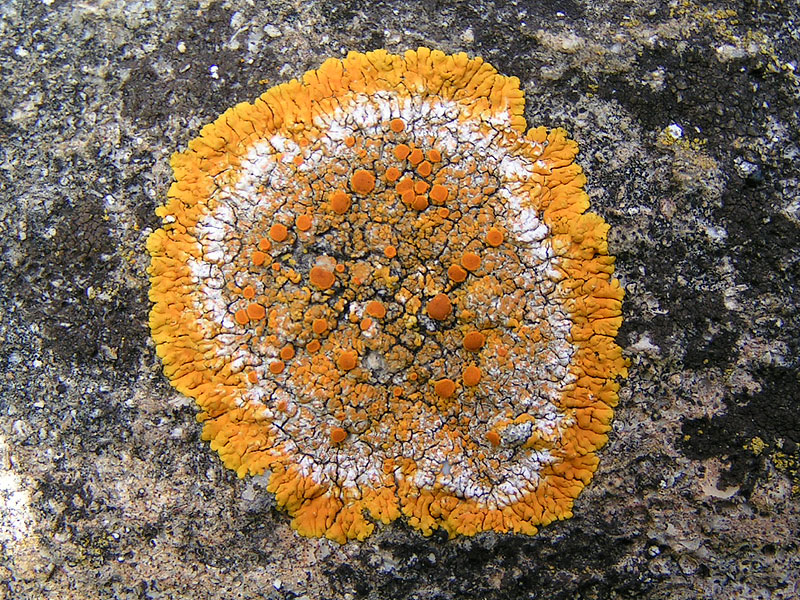In the five-kingdom classification, the viruses, viroids, and lichens are not included. In this chapter, we are going to talk about them in detail.
[tabby title=”Material”]
Viruses
Viruses are causing many diseases. Though viruses are causing diseases, it is not included in the classification because they are not considered as truly ‘living’ beings. The virus is a non-cellular organism in an inert crystalline structure. When infecting a cell, the host cell machinery is exploited by the virus to replicate themselves, killing the host. The scientist Pasteur called virus as venom or poisonous fluid. Dmitri Ivanovsky a Russian biologist in the year 1892, used filter to the tobacco mosaic virus. In his experiment showed that crushed leaf extracts from infected tobacco plants remain infectious after filtration. Martinus Beijerinck the Dutch microbiologist in the year 1898 repeated the Ivanovsky experiment and convinced that the filtered solution contained a new form of infectious agent. He reintroduced the word virus.

Virus Classification
Andre’Lwoff, Robert Horne and Paul Tournier in the year 1962 developed virus classification based on the Linnaean hierarchical system. Classification of viruses describes the diversity of viruses by naming and grouping them on the basis of similarities. The international committee on Taxonomy of Viruses (ICTV) developed the current classification system for viruses.
The general taxonomic structure
Order (-virales)
Family (-Viridae)
Sub family (-virinae)
Genus (virus)
Species (-Virus)
Recently the ICTV taxonomy established 7 orders. They are the Caudovirales, Herpesvirales, Ligamenvirals. Mononegavirales, Nidovirales, Picornavirales, and Tymovirales. Totally There are 7 orders, 103 families, 22 subfamilies, 455 genera about 2827 species and over 4000 types yet unclassified.
Baltimore Classification
David Baltimore devised the Baltimore classification system. He received Nobel Prize for his contribution. The modern virus classification uses both ICTV classification system in conjunction with Baltimore classification system. Baltimore classified the viruses based on the mechanism of mRNA. Viral genomes may be either single-stranded (ss) or double-stranded (ds), DNA or RNA. In addition to this ssDNA and ssRNA viruses may be either sense (+) or antisense (-).
Based on this classification the viruses are classified into seven groups:
- ds DNA viruses (e.g., Adenoviruses, Herpes viruses, Poxviruses)
- ssDNA viruses (+strand or “sense”) DNA (e.g., Parvoviruses)
- dsRNA viruses (e.g., Reoviruses)
- (+) ssRNA viruses (+strand or sense) RNA (e.g., Orthomyxoviruses, Rhabdoviruses)
- (-) ssRNA viruses (-Strand or antisense) RNA (e.g., Orthomyxoviruses, Rhabdoviruses)
- ssRNA-RT Viruses (+strand or sense) RNA (contains DNA intermediate in life-cycle like Retroviruses)
- ds DNA-RT viruses DNA (contains RNA intermediate in the life cycle like Hepadnaviruses)
In the year 1935 W.M. Stanley showed that viruses could be crystallized and crystals are of proteins. Viruses are an obligate parasite and inert in outside and live inside the host cell. The viruses contain genetic materials in addition to proteins. The genetic material could be either RNA or DNA. But never contains both RNA and DNA. The genetic material of virus is infectious. Single-stranded RNAs are infecting plants generally. But viruses that infect animals have either single or double-stranded RNA or double-stranded DNA viruses. The nucleic acid of viruses is protected by the protein coat called capsid made of small subunits called capsomeres. Capsomers are arranged in helical or polyhedral geometric forms. Diseases like mumps, smallpox, herpes, and influenza are caused by viruses. Symptoms of virus infection in plants are Mosaic formation, Leaf rolling and curling and stunted growth.
Viroids-Definition and Structure
Viroids are the smallest infectious pathogens. It is composed of a short strand of circular, single-stranded RNA but protein coat is absent. Almost all identified viroids are living in higher plants, in which most cause diseases; some are slight to catastrophic economic importance. Potato Spindle Tuber Viroid (PSTVd) is the first recognized viroid. Viroid name was given by Theodor Otto Diener.

Taxonomy of Viroid
Viroids are classified into two families namely Pospiviroidae-nuclear viroids and Avsunviroidae- Chloroplastic viroids.
Family Pospiviroidae
Genus: Pospiviroid; type species: potato spindle tuber viroid; 356-361 nucleotides
Genus: Hostuviroid; type species: HOP stunt viroid 294-303 nucleotide
Genus: Cocadviroid; Type species: Coconut cadang-cadang viroid; 246-247 nucleotides
Genus: Coleviroid; type species: Coleus blumeiviroid 1; 248-251 nucleotides
Family Avsunviroid
Genus: Avsunviroid; type species: Avocado sunblotch viroid; 246-251 nucleotides
Genus: Pelamoviroid; type species: Peach latent mosaic viroid; 335-351 nucleotides
Genus: Elaviroid; type species: Eggplant latent viroid; 332-335 nucleotides
Viroid diseases:
Citrus exocortis, cucumber pale fruit, chrysanthemum stunt are caused by viroids. The only known human viroid is Hepatitis-D. In plants stunting growth, stem necrosis, leave and fruit deformation and causing the death of the plant is the viroid infected symptoms. Most of the viroids are infecting only plants such as Coconut and the apple trees.
Lichens:
Lichen is a composite organism that arises by the combination of algae (Phycobiont) or cyanobacteria with fungi (Mycobiont) in a symbiotic relationship. Phycobiont is autotrophic and mycobiont is heterotrophic. Algal part is synthesizing food and fungal part is providing shelter, absorbing mineral nutrients and water. Lichens will not grow in polluted water therefore, it is a very good pollution indicators.

Lichens are in many colors, sizes, and forms. Lichens look like a plant but they are not plants. Lichens are tiny, leafless branches (fruticose) flat leaf-like structures (foliose), flakes that lie on the surface like peeling paint (Crustose).Bush like or leafy lichens are termed macro lichen and other lichens are termed microlichens. Common names for lichens contain two words (e.g., “Reindeer moss”, “Iceland moss”).
[tabby title=”Lecture”]
[tabbyending]
Subject: Biology (4253)
Important MCQs Based on Medical Entrance Examinations To Improve Your NEET Score
18000+ students are using NEETLab to improve their score. What about you?
Solve Previous Year MCQs, Mock Tests, Topicwise Practice Tests, Identify Weak Topics, Formula Flash cards and much more is available in NEETLab Android App to improve your NEET score.
Share this page with your friends

Leave a Reply